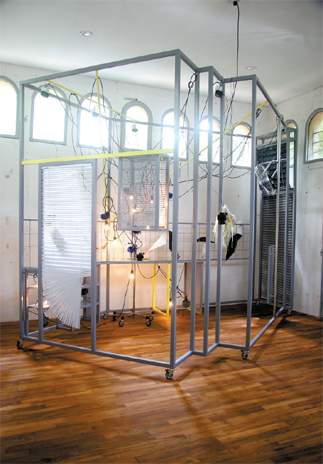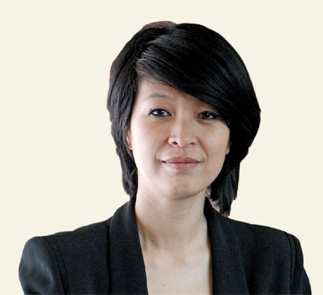Everyday objects at home at Venice Biennale

“Salim,” an installation by Yang Haegue, is on display at the “Corea” pavilion of the Venice Biennale. [YONHAP]
One of the smallest is “Corea,” which stands deep inside the exhibition hall between the Japanese and German pavilions. The space displays only the works of Yang Haegue, a Berlin-based Korean installation artist. She has hardly modified the space, constructed from thick sheets of glass.
Yang’s installation, called “Condensation,” features sculpture and video to evoke the audience’s memories of the past through light, wind and scent. She conveys this through a narrative video essay.
There are three parts to Yang’s Condensation. First is “Series of Vulnerable Arrangements? Voice and Wind,” her arrangement of Venetian blinds suspended from the ceiling to the ground. The blinds form a labyrinthine system meant to depict the neighborly coexistence of individuals living in a community.

Yang Haegue
Another part of the installation is “Salim (Running a Household).” The sculpture reproduces her Berlin kitchen, which includes a sink with a mirror, a washing sponge, a rack for pots and tangled extension cords. The kitchen, lit by bare incandescent lights, generates the savory smell of food at some points, then a rotting stench at others. Both speak of everyday domestic nurturing.
Adjacent to the kitchen, a video essay, “Doubles and Halves? Events with Nameless Neighbors,” plays in three different languages. Yang juxtaposes scenes from Ahyeon-dong in western Seoul, where she grew up, with images of the biennale grounds around the Korean pavilion during the off-season.
“When I was pondering over the exhibition title, I came across ‘condensation’ in my video essay,” Yang explained. “It was the metaphorical condensation of a disposition in the hidden spaces and marginal sites, making us feel solitary, seemingly intimate, but ultimately vulnerable.”
Lynn Zelevansky, a curator and department head of contemporary art at the Los Angeles County Museum of Art, was “impressed to see the vulnerable objects infused with emotions, ... thereby completing their existence as a whole.”
Yang is exhibiting her work not only in the Korea pavilion, but also in the main exhibition of the biennale. Her status as a rising star in the international contemporary art world may be solidified by her presence at the prestigious event.
By Jung Hyung-mo [estyle@joongang.co.kr]
Additional reporting by contributing writer Yang Seung-hee.
By Jung Hyung-mo










with the Korea JoongAng Daily
To write comments, please log in to one of the accounts.
Standards Board Policy (0/250자)